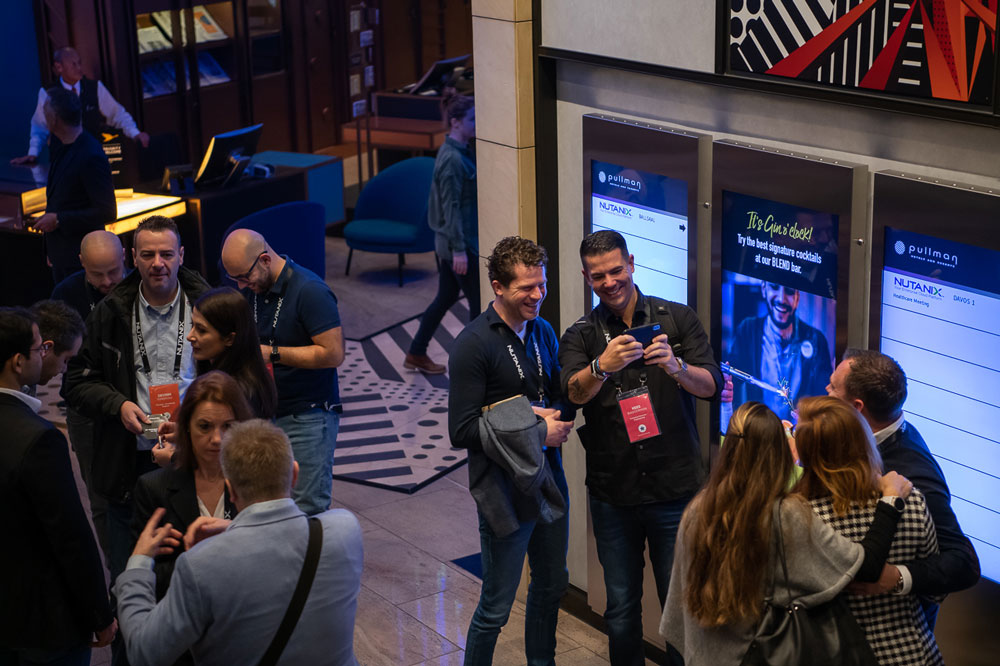For any product, design matters. All of the details must be thoughtfully put into place. From the way it looks to the product’s messaging, successful design requires research and enormous empathy for customers.
Human resources professionals need to take this same design approach, according to Rukmini Sivaraman, Vice President of Business and People Operations at Nutanix.
“HR must think as a business with a product to offer,” she said. “The company is the product, and the employees, both potential and current, are the customers.”
Sivaraman’s team designs programs and offerings that attract and recruit top talent from across the world. Design-centered thinking begins with input from a targeted audience. In this case, hiring managers and recruiters have to be aware of the needs and wants of potential employees.
“Empathy is a key first principle of design,” Sivaraman said. “And if I want to be a valuable and a valued employer, then I need empathy for the experience each candidate goes through.”
The recruiting and hiring process starts with designing programs tailored to specific talent pools. Since Sivaraman joined Nutanix over two and a half years ago, the company has nearly doubled in size to more than 5,500 employees. It now has employees in more than 50 countries worldwide. Given this rapid growth and international presence, the need for local recruiters and specially-designed local programming has increased.
Design for Recruiting College Graduates
Pradeepa Kolli, Nutanix’s Head of Global University Talent Acquisition, devotes her time to designing programs that attract talent from major universities across the world. Her team has built partnerships with universities and colleges such as Stony Brook University, Carnegie Mellon, Catholic University,University of Wilmington and University of California, San Diego to name a few.
Kolli echoed Sivaraman’s focus on empathy and stressed the importance of listening to targeted audiences. She researches what college graduates and new career starters are looking for and then applies insights to a multi-pronged approach: one for physical and the other for digital spaces.
Kolli’s team launched a university recruiting career page with the latest updates on university recruiting separate from the general career page. This special page is tailored to students’ interests and needs. Each piece of the page, from the layout to the length of the videos, was designed to optimize appeal for the university talent pool.
After studying university graduates and early career talent, Kolli’s team found that university students are looking for mentorship and coaching in the industry, career growth and work life balance. She included these findings into the way she designs materials for attracting talent and how Nutanix is described as a great place to work.
“We are moving away from the traditional career fair and looking to build strategic partnerships with professors,” Kolli said.
She said it’s no longer just about collecting resumes.’ Now it’s about offering workshops where students come to get expert insights that will help them begin a career.
“We're not there just to position Nutanix,” Kolli said. “We’re there to share knowledge through informational sessions and tech talks.”
These workshops give students skills, and allow recruiters to see how a potential candidate might fit into a group dynamic. Kolli said this is part of a larger initiative to attract talent in a more dynamic way through workshops, coaching sessions and internship programs.
Designing for Behavioral Responses
Successful design goes beyond simply attracting talent, but curates that talent as they go through the designed hiring structure to guarantee culture fit, according to Deep Mahajan, Senior Director of People Development and Culture at Nutanix. She designed a hiring method for university students in India that focuses on culture fit.
First, her team filters for performance – academic and hard skills necessary for the job – before moving onto a three-step process that filters applicants based on the company’s so-called founder’s mentality.
Initially, students write a 300-word essay based on reviewing Nutanix’s core values and applying it to their lives. Then, they are put into groups and given debate topics.
“We’re observing behaviors,” Mahajan said. “Are they in a group discussion disagreeing in a manner that is aligned to our culture? Are they showing grit by saying something different from what everyone else is saying?”
Students are interviewed about their entrepreneurial mindset and values to determine if these align with the company's mission and goals.
Mahajan said this process shows how design plays an important role in filtering for quality and goes beyond traditional hiring practices. This disruption of the standard will lead to a more diverse pool of candidates, Mahajan and Sivaraman said.
She said attracting diversity of thought can be aided through simple design steps.
“The culture of a company may be ethereal and fluid in nature, but is almost always a product of mindful and empathetic design,” Mahajan said.
The company also makes sure that those postings get shared online in places that foster diversity, such as Fairygodboss, a website that focuses on career advice and postings for women.
“There's no one kind of recipe for success,” Sivaraman said.
She said people early in their career don’t want to join a place where everyone looks and talks the same. That’s often perceived as boring.
“A place like that wouldn't survive for very long because you don't have an opportunity to look around corners, debate, to think outside the box, to drive innovation, to foresee risks,” Sivaraman said.
When it comes to attracting the best talent, it’s increasingly critical to infuse good design early and throughout the recruiting process.
Editor’s note: Learn more about Nutanix culture and job opportunities.
Jacob Gedetsis is a contributing writer. His work has appeared in The Kansas City Star, The Post Standard and The Plain Dealer, among others. Find him on Twitter @JacobGedetsis.
© 2019 Nutanix, Inc. All rights reserved. For additional legal information, please go here.








